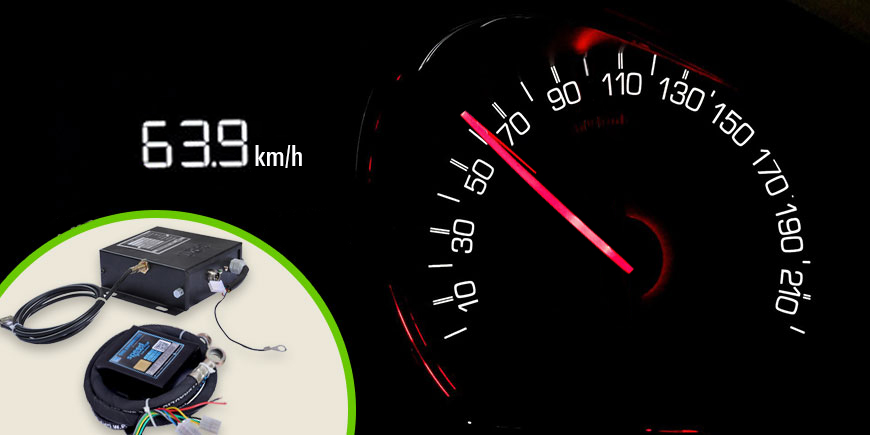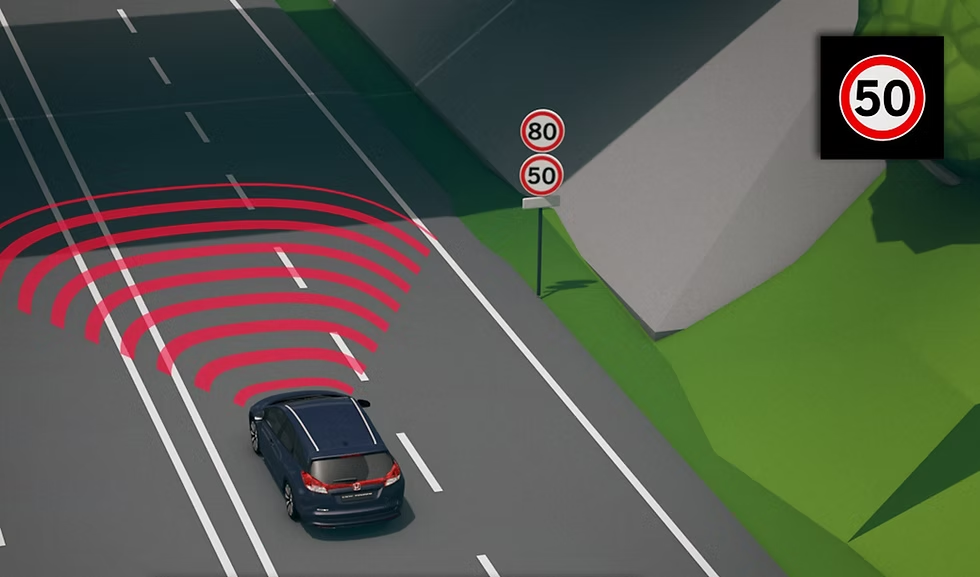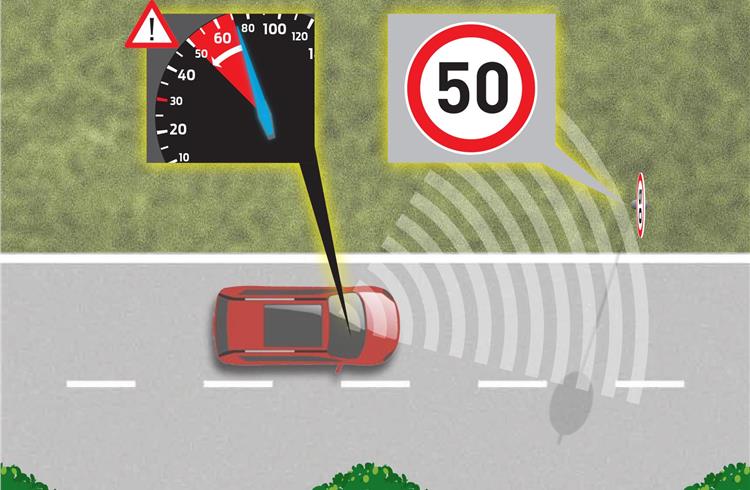Going over the speed limit isn’t just risky—it can be fatal. If you’re in charge of buses full of kids or trucks loaded with freight, letting drivers push the pedal too far isn’t an option anymore.
Speed limiters aren’t “nice to have”—they’re required, and for good reason. You’ve got three main types to think about: electronic, mechanical, and GPS-based. I’ll break down what makes each tick, where they get installed, and why every mile per hour counts.
✅Key Takeaway
What is a Speed Limiter Device?
A speed limiter blocks a vehicle from exceeding a fixed speed. It doesn’t hit the brakes or sound alarms. Instead, it quietly cuts engine power or limits fuel flow. Press the pedal all you want—the vehicle won’t go faster than it’s allowed to.
Speed limiters show up across the board—trucks, buses, heavy equipment, even motorcycles. They don’t beep, flash, or ask for credit. They just work, buried in the machinery, doing exactly what they were built to do.
There’s often confusion between speed limiters and governors. A speed governor usually refers to older mechanical systems, while modern speed limiters often work with an electronic control unit (ECU). There are also RPM regulators that cap engine revolutions, keeping things steady under the hood.
Overview of Speed Limiter Technologies
Speed limiters aren’t one-size-fits-all. Each type comes with its own strengths. Let’s break it down.
| Type | How It Works | Ideal For |
|---|---|---|
| Electronic | ECU-based throttle or fuel control | Commercial fleets, trucks |
| Mechanical | Cable or fuel restriction mechanisms | Older vehicles, low-tech areas |
| GPS-Based | Limits speed by location | School buses, hilly terrain zones |
Each of these gets the job done—but how they do it and where they shine varies a lot.
Electronic Speed Limiter Devices

Electronic speed limiters are the most commonly used systems in modern vehicles, especially commercial fleets and logistics operations. These devices connect directly to the vehicle’s Electronic Control Unit (ECU)—the brain of the engine.
How It Works
Speed limiters take their cues from sensors—specifically, ones tracking speed and throttle position. Once the vehicle hits the set ceiling (like 80 km/h), the engine control unit steps in. It can respond in a few ways:
-
Reduce fuel injection, or
-
Limit throttle opening
This interaction prevents further acceleration, even if the driver presses the pedal to the floor. The process is seamless—no sudden jerks or braking.
Smart Integration
Modern electronic speed limiters are often programmable. Fleet managers can set different speed limits for city vs highway driving. Some devices also connect with telematics platforms, allowing real-time tracking of driver behavior, speed violations, and performance trends.
Real-World Uses
They’re widely used in:
-
Delivery fleets
-
Intercity buses
-
Fuel tankers
-
Heavy trucks
Electronic systems are also regulatory-compliant in countries that require automated speed limiting to prevent road accidents and improve fuel efficiency.
Mechanical Speed Limiter Devices

Before wires, chips, and cloud dashboards, there were springs, gears, and raw mechanics—and mechanical speed limiters are a perfect example of that era still going strong today. These devices operate without electronics, relying instead on physical mechanisms to restrict how fast a vehicle can go.
How They Work
Mechanical speed limiters are usually installed on the throttle linkage or fuel pump. When the vehicle hits its top allowed speed, a physical stop kicks in. It either blocks further throttle movement or disrupts fuel flow—no electronics, just hard limits.
No computers. No sensors. Just pure mechanical restriction.
One common setup involves a governor that’s connected to the engine’s rotation. As the engine spins faster, centrifugal force causes weights or springs to expand, triggering a lever that restricts the fuel supply. The result? The vehicle simply can’t go any faster.
Why They Still Matter
They’re not clever, but they last. In places where dust, heat, and rough roads chew through electronics, mechanical limiters hold their ground. No updates, no software—just years of reliable function without a tech headache.
And let’s not ignore cost. These systems are significantly cheaper than electronic or GPS-based alternatives, making them an easy choice for:
-
Older diesel trucks
-
Farm equipment
-
Rural or remote fleets
-
Countries with minimal infrastructure
What You Give Up
Now, here’s the trade-off: mechanical systems aren’t flexible. You can’t switch between city and highway limits. There’s no way to track violations, collect speed data, or integrate with modern fleet management tools. They’re either on or off. That’s it.
And because they work based on engine speed or throttle movement, they may not always be perfectly accurate in holding a set speed, especially on hills or under load.
Use Case Example
Let’s say you run a delivery fleet in a rural region where internet is spotty, and your vehicles are ten years old. Installing GPS-based systems would be overkill. A simple mechanical limiter can be installed once and left alone—no apps, no headaches.
GPS-Based Speed Limiter Devices

Technology has turned speed limiting into something way smarter than just stopping a heavy foot. With GPS-based speed limiter devices, the vehicle doesn’t just know how fast it’s going—it knows where it is, and adjusts accordingly. That’s like giving your fleet a built-in road-safety instinct.
How GPS-Based Limiters Work
The GPS unit handles location tracking second by second. It compares the vehicle’s position to a map marked with key zones—school crossings, sharp bends, steep descents, crowded roads. Instead of reacting only to speed, it responds to context.
Once the vehicle enters a defined geofenced zone, the limiter automatically reduces the maximum allowable speed. Leave that zone? The limiter adjusts back up to the standard highway or road speed. It’s all automatic. No switches, no driver input, no distractions.
Think of it like cruise control with a brain—except it doesn’t need to be turned on or managed.
Where These Devices Are Used
This kind of system fits fleets that cross through varied terrain. Picture a school bus: quiet neighborhoods in the morning, stop-and-go downtown traffic by noon, then open roads later on. A GPS-based limiter adjusts speed automatically, based on location—not just a hardwired limit.
Other ideal use cases include:
-
Public transportation in city zones
-
Heavy trucks on hilly routes
-
Mining or construction vehicles in restricted speed areas
-
Inter-state transport fleets passing through variable zones
Why GPS Limiters Are So Valuable
-
Hands-free safety: The system reads the road, not the driver’s memory.
-
Zone-specific control: Safety zones can be defined and enforced precisely—school areas, construction zones, whatever matters.
-
Adaptability: In places where rules shift or roads get reworked often, these systems keep up without manual updates.
-
Fuel and brake efficiency: By curbing overspeeding, they cut down on hard braking and fuel-hungry surges.
And when paired with a fleet tracking platform, these limiters can also feed speed compliance data back to management for audits, insurance purposes, or route planning.
What About Signal Loss?
A common concern: what if the GPS signal cuts out—like in a tunnel or underground lot? Solid systems have a fallback plan. They switch to a default speed limit, pre-set by the fleet manager, and hold it steady until the signal returns. No surprises, no risk.
Product Example: Resolute Dynamics’ Dual Speed Limiter
Resolute Dynamics has developed a Dual Speed Limiter that uses GPS to set different speed thresholds based on terrain and geofenced zones. Let’s say a vehicle starts on flat ground with a 90 km/h limit, then heads into a mountain zone—boom, the limiter drops it to 60 km/h without anyone touching a thing.
This kind of smart adaptation is crucial for fleets that operate in mixed urban-rural areas or high-risk terrain.
Choosing the Right Speed Limiter
So, how do you pick the right one?
Here are a few questions to ask:
-
What kind of vehicle are you using? Old trucks? Go mechanical. New vans? Electronic makes sense.
-
Where do you drive? Inner-city, long hauls, or mountains? GPS-based might save your day.
-
Do you need data reports or remote control? Then don’t even look at mechanical. Electronic or GPS is the way to go.
-
Are you meeting regulations? Some countries now require certain types of limiters for public vehicles or cargo fleets.
Think of it like buying shoes. Don’t pick based on looks. Choose based on the road you walk every day.
Why Companies Trust Resolute Dynamics
Resolute Dynamics is more than just another name in vehicle safety. They’ve got a reputation for smart products that actually work in the real world. Their electronic speed limiter is precise and reliable. Their Dual Speed Limiter adapts to changing environments—perfect for hilly or urban terrain. They also offer school bus safety solutions, RPM regulators, and GPS tracking devices that sync with your limiter setup.
It’s not just about slowing down. It’s about driving smarter.
FAQs on Speed Limiter Devices
Can I install a speed limiter on an old truck?
Yes. Mechanical systems are great for legacy vehicles, and some modern electronic ones can be retrofitted too.
Do GPS-based limiters work without signal?
Most systems rely on satellite data. If you lose signal in a tunnel or remote area, they default to a safe preset.
Can drivers override speed limiters?
If installed properly, no. Tampering can void warranties and break laws in some countries.
Do these affect fuel efficiency?
Actually, yes—in a good way. Limiting top speed reduces fuel waste, especially on highways.
Are they legal?
In many countries, yes—and sometimes even required for certain vehicle categories.
Final Thoughts
Speed limiters aren’t about control—they’re about responsibility. Whether you go with an electronic brain, a mechanical heart, or a GPS compass, each tool has its place. And when used wisely, these devices don’t just limit speed—they protect lives.
If you’re managing a fleet or just want to stay ahead of regulations, explore smart limiter solutions like those from Resolute Dynamics. Better to be safe than sorry—and better to be precise than reckless.
